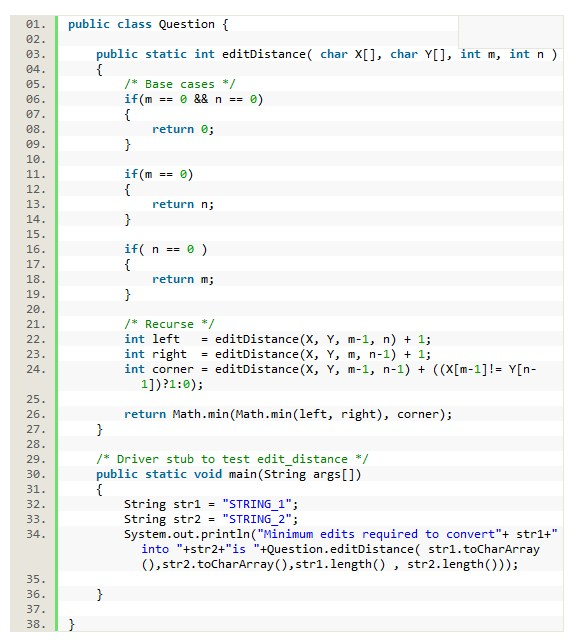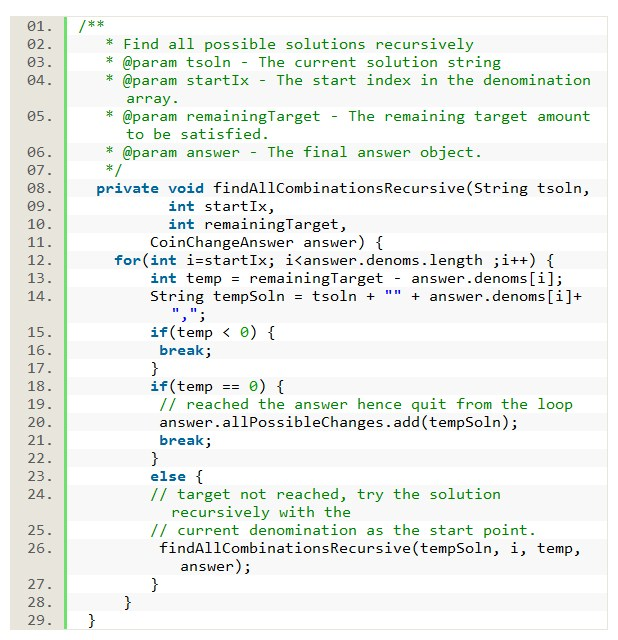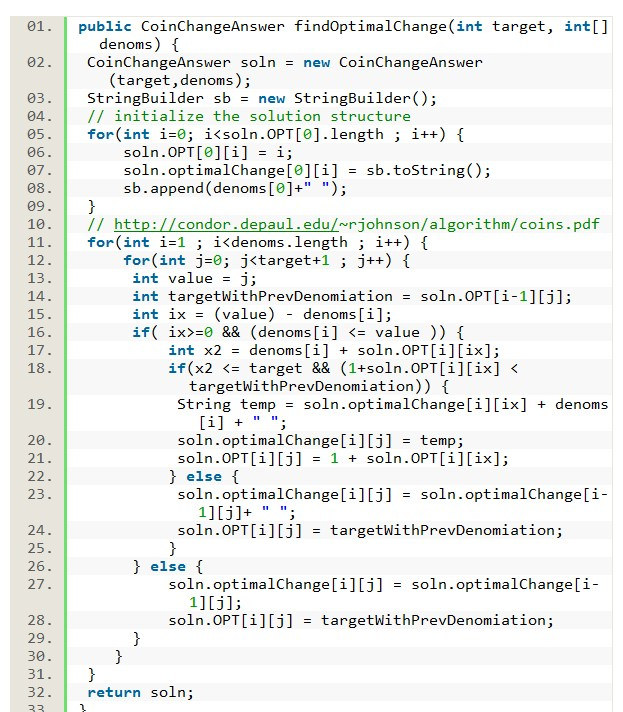Problem: Consider a 2-D map with a horizontal river passing through its center. There are n cities on the southern bank with x-coordinates a1….an and n cities on the northern bank with x coordinates b1….bn. The cities on each bank are also numbered 1 through n and these numbers do not correspond to the ordering of the x-coordinates. You can only build a bridge from a city on the south bank to a city on the north bank with the same number. No two bridges may cross each other. An example of a valid bridge building is shown in Figure 1. Give an algorithm for finding the maximum number of bridges that can be built.
Solution:
Consider the sequences A = N(a1),……..,N(an) and B = N(b1),…….,N(bn) where N(ai) is the number of the city with x-coordinate ai. The length of the longest common subsequence of A and B is the maximum number of bridges. Since A and B are non-repeating, the length of the LCS for A and B can be calculated in O(n log n) time. Make sure you understand why that is the case!
Proof that length of the LCS is the maximum number of bridges: We show that the maximum number of bridges cannot be more than the length of the LCS and that the maximum number of bridges cannot be less than the length of the LCS.
Firstly, assume the length of the LCS is m. Let c1,…….,cm be a longest common subsequence of A and B, corresponding to cities ai1……aim in A and bj1,,,,,,,, bjm in B. Then for 0 < k< = m, we can draw a bridge from aik to bik . None of these bridges intersect. Therefore, we can draw at least as many bridges as the length of the LCS.
Now assume we can draw at most m bridges from cities CA = ai1,…..aim to cities CB = bj1,….., bjm and WLOG assume CA is ordered by increasing x-coordinate. Then N(aik ) = N(bjk ) since we can draw a bridge between them. Moreover, bjk must have a higher x-coordinate than any of bj1,…..bjk-1 and a lower x-coordinate than any of bjk+1,…..,bjm so that none of the bridges cross.Therefore CA is a subsequence of A and CB is a subsequence of B and we have found a common subsequence. Thus, the length of the LCS is at least the maximum number of bridges




















